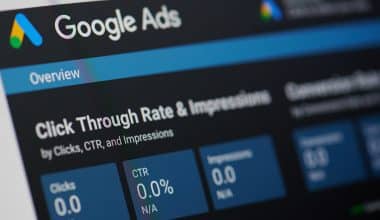The Total Addressable Market (TAM) of a market is a very important factor for every business because it plays such an important role in determining the growth of the business. TAM, which is also known as the total available market, refers to the overall revenue opportunity that is available to a product or service if that product or service achieves 100% market share. Another name for the TAM is the total available market. The total available market is often referred to as the total prospective market. Let’s have a look at the Total Addressable Market Calculation and an applicable example.
The TAM will illustrate the theoretical total market that could exist for a product under the assumption that access to the product is not restricted in any way, and that the supplier has an unlimited supply of operational resources. In other words, the TAM will assume that access to the product is not restricted in any way.
What is Total Addressable Market
A product or service’s total addressable market, sometimes known as its total available market (TAM), is a term that is used to characterize the potential for that product or service to generate money.
To be straightforward TAM is a term for annual expected sales within an observable market, TAM is another term for annual projected sales within an observable market.
TAM is a useful tool for prioritizing business possibilities since it provides a quick metric of the underlying potential of a particular opportunity.
Total Addressable Market, or TAM, refers to the total revenue opportunity that is open to a product or service if that product or service gets a share of the market equal to one hundred percent. It is helpful in assessing how much effort and money a person or corporation should invest into a new business line and helps determine whether or not they should do so.
Total Addressable Market Calculation
When it comes to contributing to a company’s overall success, the value of TAM simply cannot be overemphasized. In efforts to build a strong company, we have gained knowledge about the many benefits that TAM can bring to a company from seasoned business professionals
Total Addressable Market (TAM) sizing exercises have increased in popularity in recent years as a method for evaluating the potential of a business. On the other hand, TAM is commonly miscalculated and misinterpreted because of its complexity.
When computing TAM, there are three basic calculation methods, as well as one secondary way, which are as follows:
- Top-down takes a macro view of assessing factors right at the very top of an economy.
- Bottom-up looks at a subset of a localized situation and then extrapolates the results to the wider market opportunity.
- Value theory focuses on the positive externalities derived from an offering versus incumbent options.
- The secondary collection method uses verified third-party research (also known as external research).
#1. Top Down Approach
The top-down total addressable market calculation method is based on the idea that you should begin at the very top of a macro data set and work your way down to identify a market subset. Starting with a population, it makes sense to use geographic, economic, and demographic hypotheses to get rid of subsets that don’t add anything.
The benefit of this approach is that macroeconomic data may be found with reliable and accessible statistics. UN, OECD, The World Bank, and CIA World Factbook are a few examples of sources.
#2. Bottom-Up Method
The objective of this method is to identify intermediate steps that can be extended to the entire population. Because it is built on a tested data point that can be enlarged to reveal the entire TAM population, it is preferred for being more accurate. Secondary research (news reports, corporate filings) or primary gathering techniques (such as a poll in a local market) are both options.
Since so many broad assumptions are extracted from a small subset, the bottom-up technique may produce an erroneous TAM. This is especially true for a worldwide TAM calculation because of how dramatically different countries’ population densities, economies, and consumer preferences are.
#3. Value Theory
Top-down and bottom-up strategies assume a new offering fits into established paradigms. The value hypothesis, total addressable market calculation may be best for items or services that can evolve a market or bring value to different consumer groups.
Value theory tries to figure out how much a product’s price can show about its value. A corporation calculates its value and why it should be priced accordingly. When offering new items or cross-selling to existing clients, TAM is calculated using value theory.
Estimating Uber’s addressable value using value theory. Users can drive themselves, take public transportation, or use Uber taxis. Since people are willing to forgo all these options and choose an Uber cab, the firm can measure the value these users obtain from Uber taxis and determine how to price them.
#4. Secondary Method
External Research
Referencing professional data that has already been collected is a simple and speedy method that can be used to identify a TAM. Although private research studies are pricey, the headline data contained inside them is sometimes made available to the general public through press releases. The benefits of using these numbers are more practical. They are easy to get and, according to the law of the division of labor, were put together by a skilled professional who can be trusted. These are some of the advantages of using these figures.
The disadvantage of this method is that it is a black box in terms of how the number was calculated. If an investor asks you to defend the rationale behind the figures, the only defense will be, “Well, it was published by X, so it’s valid.”
Total Addressable Market Formula
First, multiply your average sales price by your number of current customers. This will yield your annual contract value. Then, multiply your ACV by the total number of customers. This will yield your total addressable market.
TAM= Potential Market Size x Competitive Position
Potential Market Size= Number of potential customers in the market
Competitive Position = Your company’s share of the total number of possible customers.
Total Addressable Market Example
And, of course, examples make things clearer and more understandable. Let’s take a quick look at this total addressable market example below.
The number of people who buy a bicycle in a single year represents your potential market size, also known as your total addressable market. Let’s say 80 million people in the United States do so.
If a company holds 50% of that share, then that company has the potential to sell this product or service to 40 million customers. If there are two other companies, and each of them holds 20% of that share, then each of those companies has the potential to sell to 20 million customers.
Read more on total addressable market example here: TAM Workshop
How is TAM market size calculated?
First, multiply your average sales price by the number of current customers. This will yield your annual contract value. Then, multiply your ACV by the total number of customers. This will yield your total addressable market.
What Is the Difference Between Tam and Sam?
TAM (Total Addressable Market)
TAM is a product’s entire market demand. It’s the maximum revenue a business can make in a given market.
Total addressable market helps companies estimate a market’s growth potential.
Whereas
SAM (Serviceable Addressable Market)
Your business model’s limitations (such as expertise or geography) may prevent you from serving your whole potential market.
Serviceable addressable market helps firms assess the market share they can achieve to set goals.
What TAM Means?
Total Addressable Market
How are TAM SAM and SOM calculated?
By conducting a bottom-up examination of the industry, the total addressable market can be determined most accurately. In a bottom-up analysis, the total number of consumers in a market is calculated by dividing it by the average yearly income of each consumer in this market.
Calculation of the Serviceable Addressable Market (SAM)
Calculating with the SAM formula
Add up all the prospective consumers who would be a good fit for your company, then multiply that total by the typical yearly revenue of these types of customers in your market to determine your serviced addressable market.
Calculating the Serviceable Obtainable Market (SOM)
Calculating with the SOM formula
Subtract your revenue from the prior year from the serviceable addressable market for your sector. Your market share from the prior year is represented by this %. After that, multiply your market share from the previous year by the serviceable addressable market for your sector from this year.
Always remember that these numbers are primarily estimations.
Conclusion
Total addressable market is beneficial since it helps to improve one’s awareness of the progress that a firm is making, which, in turn, raises the possibility that one may identify issue areas and make improvements in those areas. However, it is essential to be aware that capturing one hundred percent of a TAM is virtually impossible. This is something that should be kept in mind at all times.
Investors place a high level of importance on the total addressable market since it is a good indicator of the company’s potential for growth. And it should go without saying that prospective investors are on board with the idea of recognizing the TAM of a firm prior to making an investment in that company.
I believe the calculation and example given here for the total addressable market were quite helpful.
Total Addressable Market FAQs
What are the two approaches for calculating your potential TAM?
The two common approaches are
- Top-Down Market Size.
- Bottom-Up Market Size.
How Is Tam Market Size Calculated?
First, multiply your average sales price by the number of current customers. This will yield your annual contract value. Then, multiply your ACV by the total number of customers. This will yield your total addressable market.
Is TAM the same as market size?
No, it isn’t.
What Is a Good Market Size?
$100M.






